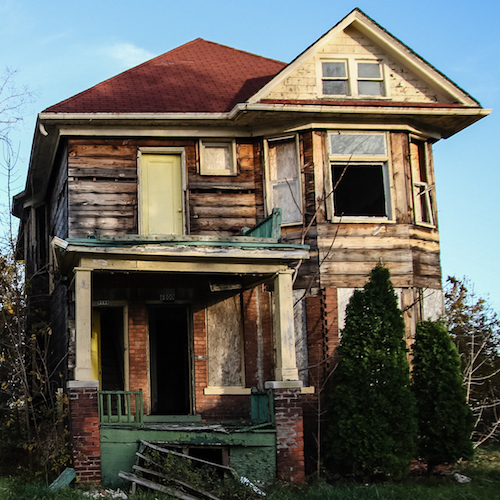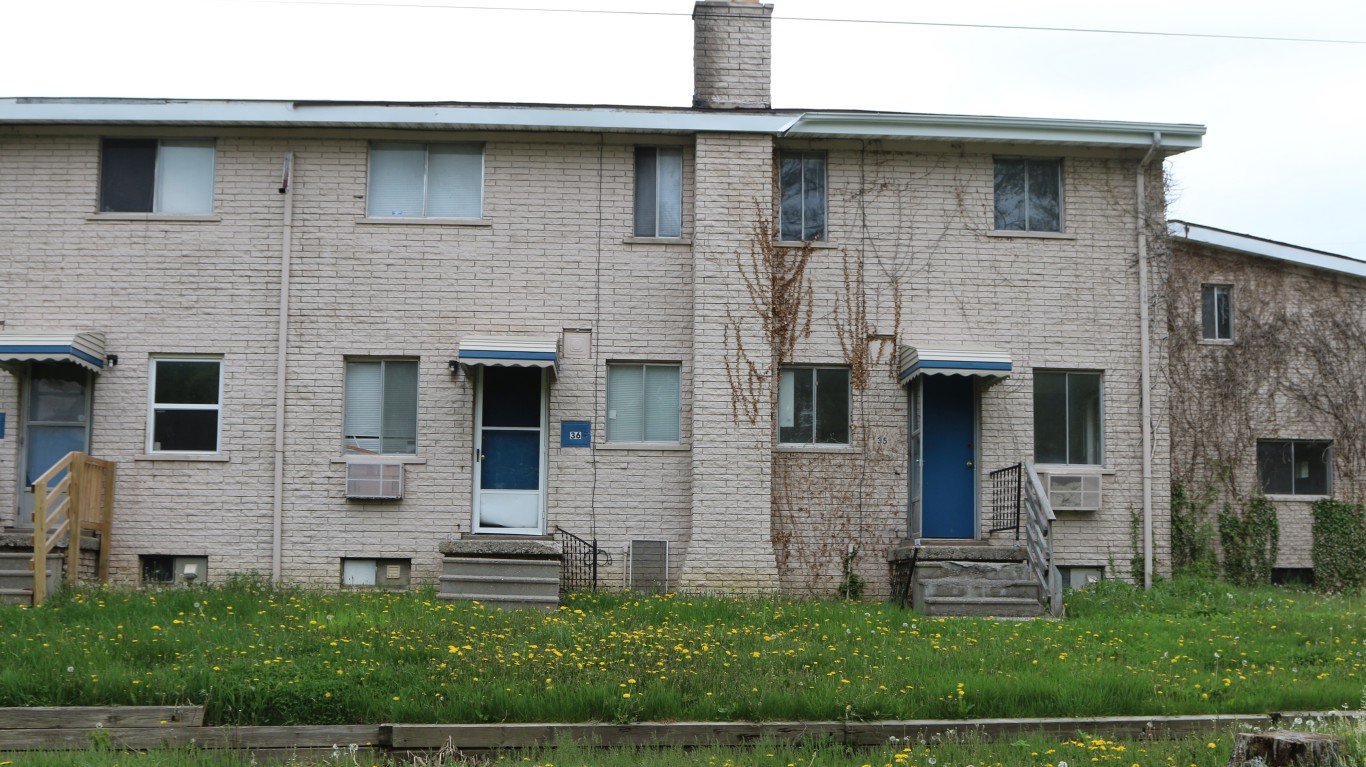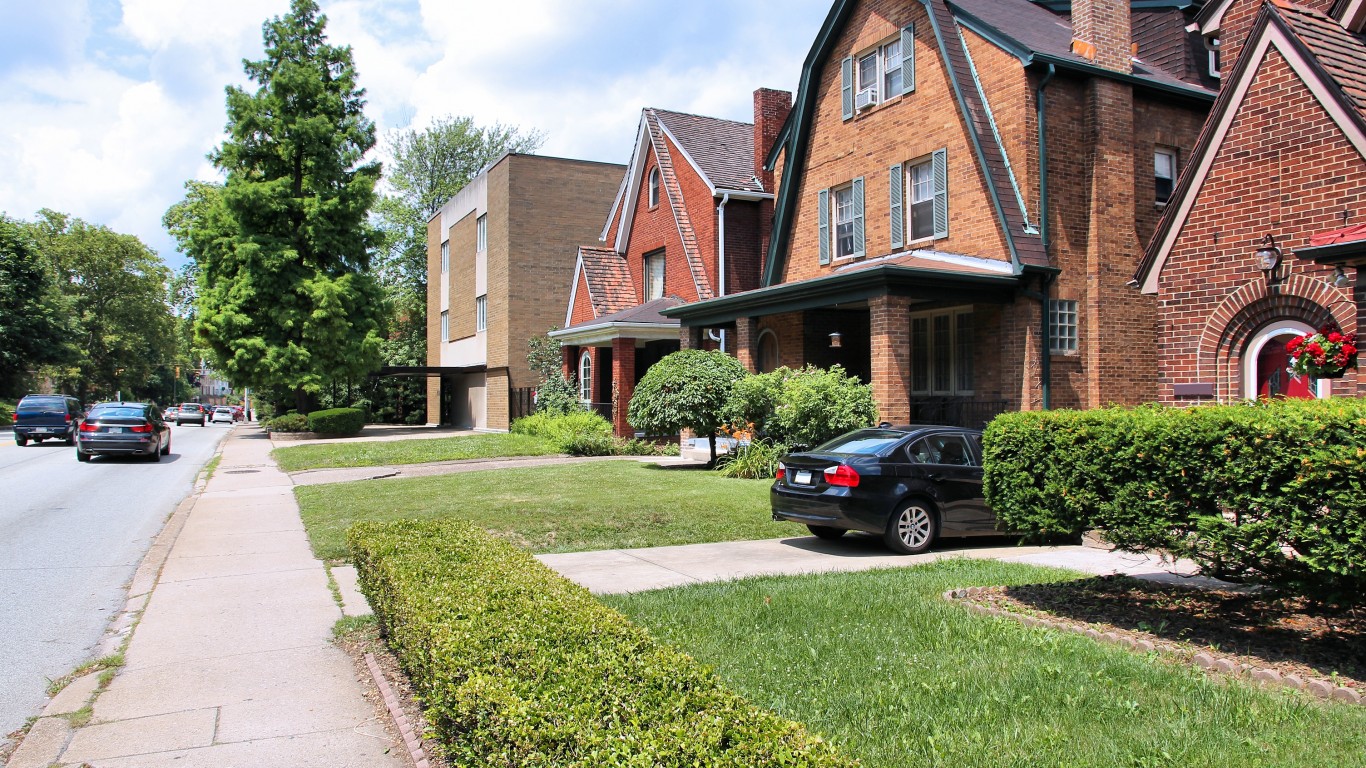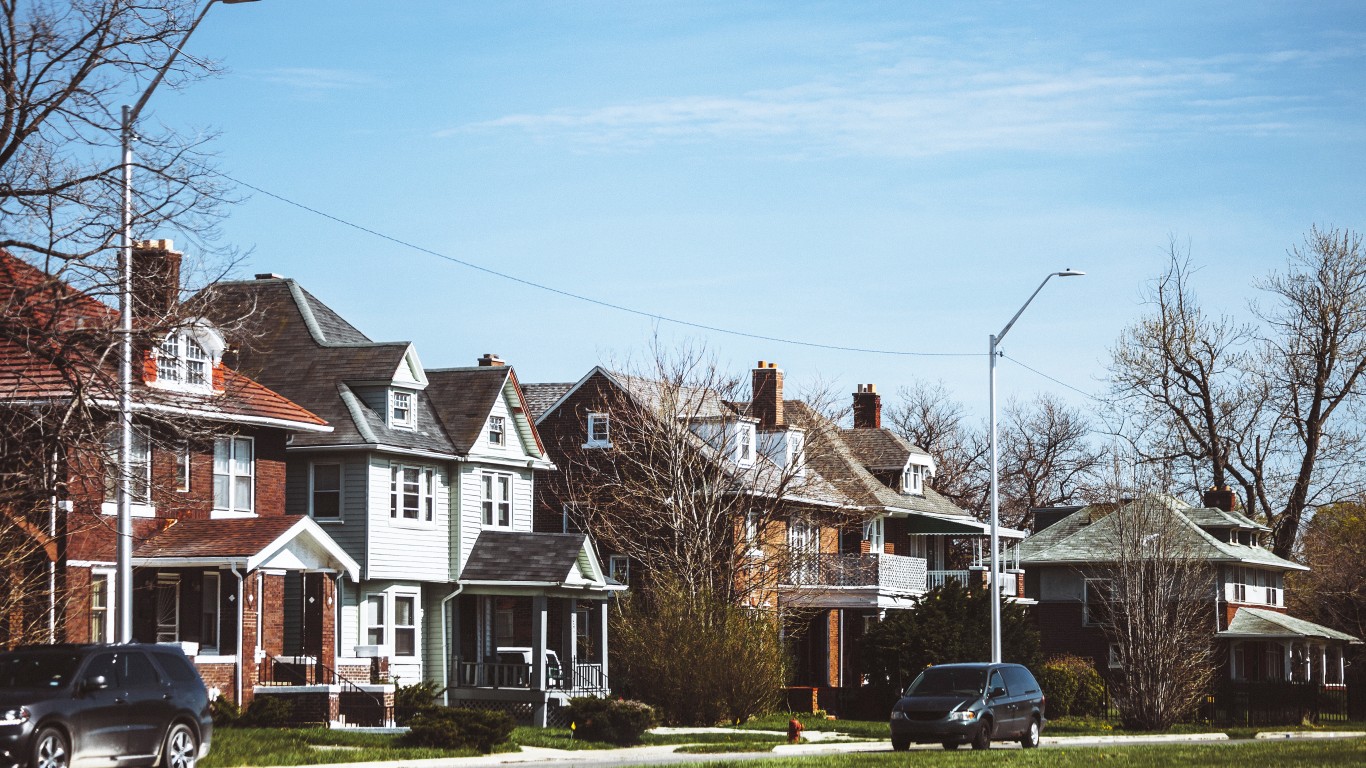Special Report
7 Major American Cities That Lost Half Their Populations

Published:
Last Updated:

In 2021, in the middle of the COVID-19 pandemic, the U.S. population grew by just 0.1%, the smallest growth in the nation’s history. It rebounded only slightly in 2022, growing by 0.4%. While experts point to COVID-19 as a major reason for such historically poor growth, the last two years are merely the lowest point in a trend that has lasted for decades.
Long gone are the years of booming growth, like the 1950s, when the population increased close to 2% every year. Outside of a small surge in the 1990s, growth has been slowing ever since. And the national decline in population has been accompanied by another trend: the loss of tens of thousands, sometimes hundreds of thousands of residents every decade, in some of the nation’s largest cities because of economic and demographic changes.
There are in fact seven cities that were once among the nation’s biggest metropolises and have become shadows of their former selves. To identify the cities that have lost more than half of their populations, 24/7 Wall St. compared historical editions of the U.S. Census Bureau’s decennial census, starting with 1950, to the most recent available population figures from the Census. We listed all seven cities that were within the 100 most populous cities in the U.S. in 1950 and have lost more than half of their populations as of July 2021.
The cities on this list are very well known places, including Detroit, St. Louis, and Pittsburgh. They share a similar designation as so-called Rust Belt cities: former hubs of American industrial manufacturing, especially automobile manufacturing, and the production of materials, notably steel. By the 1970s the industries that made these cities some of the largest in the country began to decline nationwide. Manufacturers began implementing more automation and reducing labor. Many also began outsourcing labor to facilities overseas, where cheaper labor could be obtained. (Here are some jobs that used to be common but no longer exist.)
Today, the residents that remain in these cities are more likely to struggle to find work and live in poverty. SNAP (formerly food stamps)recipiency rates in these seven cities range from 17.7% in Pittsburgh to nearly 40% in Flint. Several of these cities are among the hardest-hit communities in the nation’s ongoing opioid epidemic. (These are the American cities that declined from wealth into poverty.)
The population decline in these cities is not simply a result of job loss, but of other demographic trends. Many of these cities also went through the process of white flight, as more affluent white residents left urban areas for suburbs. Across the United States, 12.2% of residents are black, but all the cities on this list have a higher share of Black residents. In five, at least 40% of the population is black, and in one, Detroit, 77.5% of residents are Black, while just 10.1% are white.
A history of segregation and discrimination, including housing discrimination in these cities, has left a legacy of racial economic inequality. Black residents earn far less than white residents in these cities. In St. Louis, the median income for black households is $30,947 a year, compared to the median income for white St. Louis households of $64,989.
The governments of the cities on this list have attempted to revitalize impoverished neighborhoods and shuttered downtown businesses. As housing in other parts of the country continues to become less affordable, these cities have offered relatively cheap homes and commercial real estate to prospective young professionals and businesses. Buffalo, New York, for example, has had some success with its revitalization efforts, and the city’s population actually increased between 2010 and 2020. It remains to be seen if these seven cities and others like them will ever be able to return to something like their former glory.
Click here to see 7 major American cities that have lost half their populations.
Click here to see our detailed methodology.

7. Flint, Michigan
> Population decline, 1950-2021: -50.6% (-82,515)
> 2021 population: 80,628 — #463 largest
> 1950 population: 163,143 — #60 largest
> Largest decade population loss: 1970s: -33,706 (-17.4%)
[in-text-ad]
6. Buffalo, New York
> Population decline, 1950-2021: -52.3% (-303,325)
> 2021 population: 276,807 — #78 largest
> 1950 population: 580,132 — #15 largest
> Largest decade population loss: 1970s: -104,898 (-22.7%)

5. Pittsburgh, Pennsylvania
> Population decline, 1950-2021: -55.6% (-376,275)
> 2021 population: 300,431 — #68 largest
> 1950 population: 676,806 — #12 largest
> Largest decade population loss: 1970s: -96,179 (-18.5%)

4. Cleveland, Ohio
> Population decline, 1950-2021: -59.8% (-546,817)
> 2021 population: 367,991 — #54 largest
> 1950 population: 914,808 — #7 largest
> Largest decade population loss: 1970s: -177,081 (-23.6%)
[in-text-ad-2]

3. Youngstown, Ohio
> Population decline, 1950-2021: -64.2% (-108,060)
> 2021 population: 60,270 — # 643 largest
> 1950 population: 168,330 — #57 largest
> Largest decade population loss: 1960s: -26,901 (-16.1%)

2. St. Louis, Missouri
> Population decline, 1950-2021: -65.8% (-563,486)
> 2021 population: 293,310 — #70 largest
> 1950 population: 856,796 — #8 largest
> Largest decade population loss: 1970s: -169,151 (-27.2%)
[in-text-ad]

1. Detroit, Michigan
> Population decline, 1950-2021: -65.8% (-1,217,104)
> 2021 population: 632,464 — #27 largest
> 1950 population: 1,849,568 — #5 largest
> Largest decade population loss: 1970s: -308,143 (-20.4%)
Methodology
To identify the cities that have lost more than half of their populations, 24/7 Wall St. compared historical editions of the U.S. Census Bureau’s decennial census, starting with 1950, to the most recent available population figures from the Census Bureau’s Population and Housing Unit Estimates. We listed all seven cities that were within the 100 most populous cities in the U.S. in 1950, which have lost more than half of their populations as of July 2021. The decade with the largest population loss represents the decade with the largest numerical decline in population, not the largest percent decline.
The thought of burdening your family with a financial disaster is most Americans’ nightmare. However, recent studies show that over 100 million Americans still don’t have proper life insurance in the event they pass away.
Life insurance can bring peace of mind – ensuring your loved ones are safeguarded against unforeseen expenses and debts. With premiums often lower than expected and a variety of plans tailored to different life stages and health conditions, securing a policy is more accessible than ever.
A quick, no-obligation quote can provide valuable insight into what’s available and what might best suit your family’s needs. Life insurance is a simple step you can take today to help secure peace of mind for your loved ones tomorrow.
Click here to learn how to get a quote in just a few minutes.
Thank you for reading! Have some feedback for us?
Contact the 24/7 Wall St. editorial team.